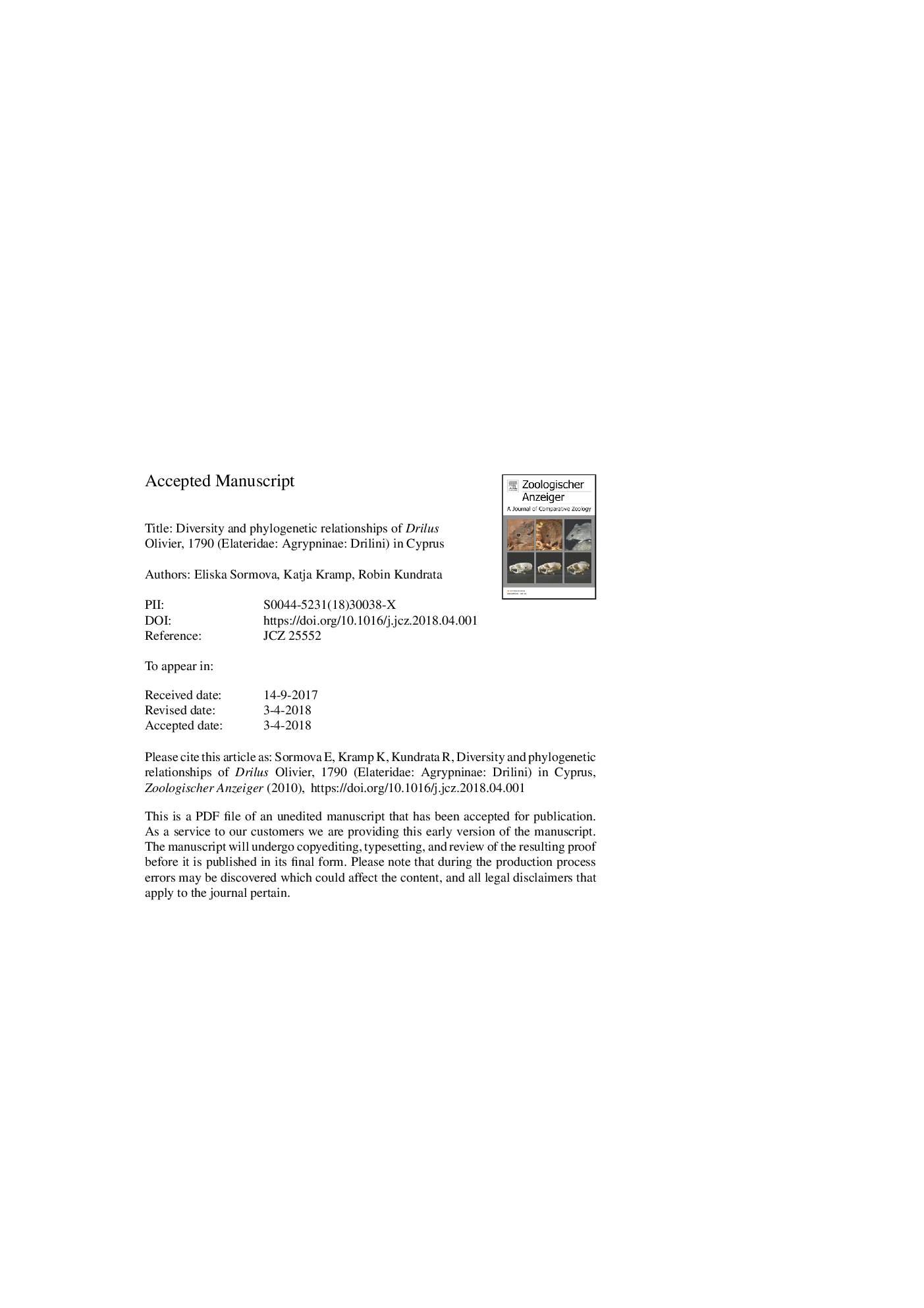| Article ID | Journal | Published Year | Pages | File Type |
|---|---|---|---|---|
| 8626707 | Zoologischer Anzeiger - A Journal of Comparative Zoology | 2018 | 45 Pages |
Abstract
The neotenic elaterid genus Drilus Olivier, 1790 (Elateridae: Agrypninae: Drilini) contains more than 40 species distributed primarily in the Mediterranean region. The precise number of species remains ambiguous due to the insufficient taxonomic investigation in several areas. Herein, we study Drilus diversity in Cyprus and we recognize the following species: D. humeralis Pic, 1931, D. rectus Schaufuss, 1867, and D. rufipes (Baudi di Selve, 1871). Drilus testaceipes Pic, 1933 syn. nov. is synonymized under D. rectus, and D. truquii (Baudi di Selve, 1871) syn. nov. is synonymized under D. rufipes. As consequence of these taxonomic changes, Drilus humeralis remains the only species endemic to Cyprus. Females of D. rectus and D. rufipes are described and figured for the first time, as well as the larvae of D. rufipes. A key to the males of Drilus species in Cyprus is given. Drilus rectus is recorded in Syria for the first time and D. rufipes is recorded in Rhodes. To examine the phylogenetic relationships of Drilus in Cyprus, we produced the cox1-3ʹ, cox1-5Ⲡand rrnL mtDNA sequences for available specimens of D. rectus and D. rufipes and merged them with data from GenBank. Results of the maximum likelihood analysis and Bayesian inference suggest a close relationship between D. rectus and Drilus cf. mertliki from Turkey, and a sister position of D. rufipes to a clade formed by the species from the Ionian Islands, Peloponnese, and Crete. Using the multigene barcoding approach including the above mentioned mitochondrial markers and the nuclear arginine kinase, we have been able to associate the different larval stages from Cyprus with the adult males of D. rufipes, and confirm the intraspecific variability in male body size and antennal coloration. Moreover, the low genetic difference in the cox1-3Ⲡfragments indicates the close relationship between D. rectus populations from Cyprus and southern Turkey.
Related Topics
Life Sciences
Agricultural and Biological Sciences
Animal Science and Zoology
Authors
Eliska Sormova, Katja Kramp, Robin Kundrata,
